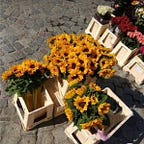Libyan Traditional Clothing
The old traditional clothes or “costumes” in Libya are different from city to city in terms of color, shape, and designing. Furthermore, some of them are shaped for children, some for adults and some are designed uniquely for both sexes. It’s worthy mentioning that the traditional clothes of all kinds have been developed as the development of other aspects of life whether in the rural cities, desert, and cities.
Indeed, those type of clothes were made by masterful hands with simplicity while in nowadays they have altered with more creativity, refinement, ornaments.
1- The Libyan Bridal Dress:
In fact, the traditional wear differs from one region to another slightly; the general costume consists of a blouse with baggy sleeves that are embroidered with beads and silver/gold thread and baggy silk trousers that have an elastic band at the bottom. On top of that, women dress up brightly colored cloths are made into dresses like togas and held together by silver brooches. On the other hand, Women in the rural areas use heavy woven rug-like cloths due to the climate. The head is covered using a colorful cloth embellished with colorful pom-poms. Libyan women wear large pieces of gold or silver jewelry. The neckwear usually goes down to the knees and the bracelets are 4 — 6 inches wide. Women only wear the full dress with the jewelry in special occasions and weddings. It is traditional for the groom to give the outfit with the gold to his bride at their wedding and for the bride to wear it the day after. The women’s traditional dress is excessively pricey, but the prices vary depending on the quality and weight of gold or silver.
The Pinkish day (Alboudri):
The bride dresses up a traditional pink-striped voluminous dress, folded up into cushion-like forms at the back and hips, and had a matching kerchief tied up on top of her head plus wearing huge gold in her hands.
We call it ‘Alboudri day’ because it’s the day that the pride dresses up in pink, as well as, the pride in that day prepares herself to get the baskets of clothes, jewelry including gold and silver, makeup, and some food like cheese, bread, egg, gum, and fuzzy drinks from the groom’s family as a traditional thing.
Moreover, when the pride’s family members get those things, their role is to show them to the visitors, the visitors who come to celebrate the wedding party up to the Alhenna day.
Al-henna Day:
When the Alboudri day finishes, henna is applied. Sometimes it could be done in the same day and sometimes not, it depends. As much as I know, alhenn differs from region to region in Libya.
Providing an example: in Tripoli, they just cover the fingers with henna while in Misrata city they fully cover the both hands and foot with henna as the giraffe stripes. On the flip side, in Benghazi they apply it as a normal thing which means the bride’s henna isn’t that special as the western cities.
A tray with the ritual henna and associated implements is placed in front of the bride. Sometimes a family member will apply the henna but if they are not skilled, a professional is called upon to do it. The parts of the body which are not going to be hennaed are covered with string — either it is wound round the lower parts of a finger for example leaving the upper parts free, or in olden times to obtain the patterns on hands and feet, the string would be fashioned into different shapes and laid across the appropriate part of the body. (Now they have stencils.) The henna is not painted on but is thickly applied in a paste over the hand, arm or foot, and then bound with cloth to keep it warm to speed up the activation process. Formerly, straw was used for its warming properties. Thus bound and pasted the bride passes the time with her friends — feet and arms aloft. The process can take either a few hours or all night depending on the desired depth of color. The longer it is left on, the deeper the red.
2- The Libyan Men outfit:
The traditional dress is now limited to special occasions; men wear it more often. Indeed, it is popularly worn for Friday prayers, Eid (Islamic holiday) and weddings. Although the outfit slightly differs from one area to another, Libyan men’s clothes tend to be similar across entire Libya. It contains of a long white shirt ‘Jalabiya’or ‘Qamis’, long trousers ‘Sirwal’ and a vest called ‘Sadriya’ that is usually heavily knit with black silk and has buttons on its front. Men also wear a headdress called a ‘Shashiyah’ that is usually red or black. Men in Tripolitania prefer wearing the black Shashiyah while the men in Cyrenaica wear both. Libyan men also wear a tight, knitted, white cap underneath the Shashiyah for when they are indoors. A large outer cloak known as ‘Jarid’ is worn on top and wrapped around the body in a Roman-toga way, except in Libya, the Jarid is usually tied at the right shoulder and the remainder is brought around up over the head. Libyan men wear leather boots, usually with a heel for riding horses, leather sandals or slippers.
